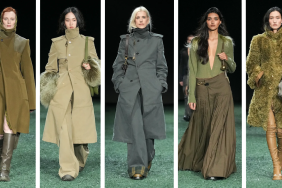It is hard to imagine that a brand could suffer from overexposure, but that’s exactly what led to a decline in the image of Burberry in Britain.

The company was started in England in 1856, by 21-yea- old Thomas Burberry, as an outfitter’s shop that eventually grew into an emporium. By the late 1800’s, they had developed a name for quality and innovation, having created items of clothing such as the gabardine and the Tielocken, which was used by officers during the Boer War.

By 1920, the red white and black Burberry check was introduced into the lining of their trench coats. Burberry was well known for providing clothes to the higher classes of British society, including royalty.
Although the company maintained its image intact overseas, particularly in the Asian and American markets as the epitome of British luxury, by the 1970’s it began to suffer in Britain.

The rise in what was known as football casual wear, meant the Burberry check had been adopted by hooligans, thugs, and “chav” culture.
The Burberry check had taken a complete turn in what it signified to the public, becoming instead a symbol for the flashy “bling bling” culture that encompassed a class of uneducated and uncultured persons. The name “Burberry” became synonymous with anything gaudy and flashy, turning into something of a national joke. Many bars and clubs wishing to retain a sense of style and exclusivity began to advertise as “no Burberry allowed”, in an attempt to ban the now tacky check pattern.

However, the company had expanded as a clothing line, providing not only overcoats and handbags, but umbrellas, scarfs, swimwear, and even fragrances. Burberry proved vastly popular in other markets, and in 1994 Christy Turlington was used in a campaign.
By 1997, New York native Rose Marie Bravo became Chief Executive Officer, her main intention being to revitalize the brand in an attempt to move away from the negative perceptions and stigma Burberry had embarrassingly adopted.
The push in marketing began to form itself around the idea of British chic, with fashion campaigns portraying British celebrities and models such as Kate Moss and Ioan Gruffudd. Burberry was being sold as a lighter, younger, more cosmopolitan brand, taking on the idea of British style without the stuffiness. Taking the spotlight away from the check, their designs began to centre themselves on a classier type of young adult, a look sold as quintessentially London.
It seems the fruits of their labours are finally paying off. This year has seen a move from Milan to London to display their Spring/Summer 2010 collection for September’s fashion week, and a campaign centred around Harry Potter star Emma Watson.
Burberry is back, and more beautiful and British than ever.








